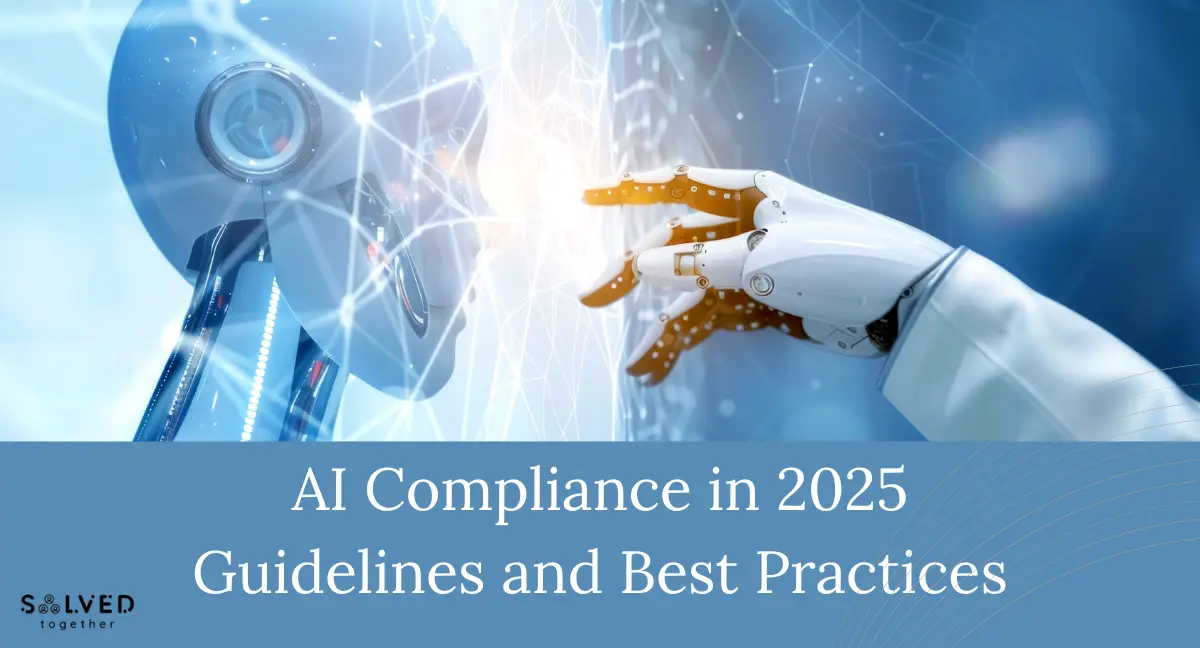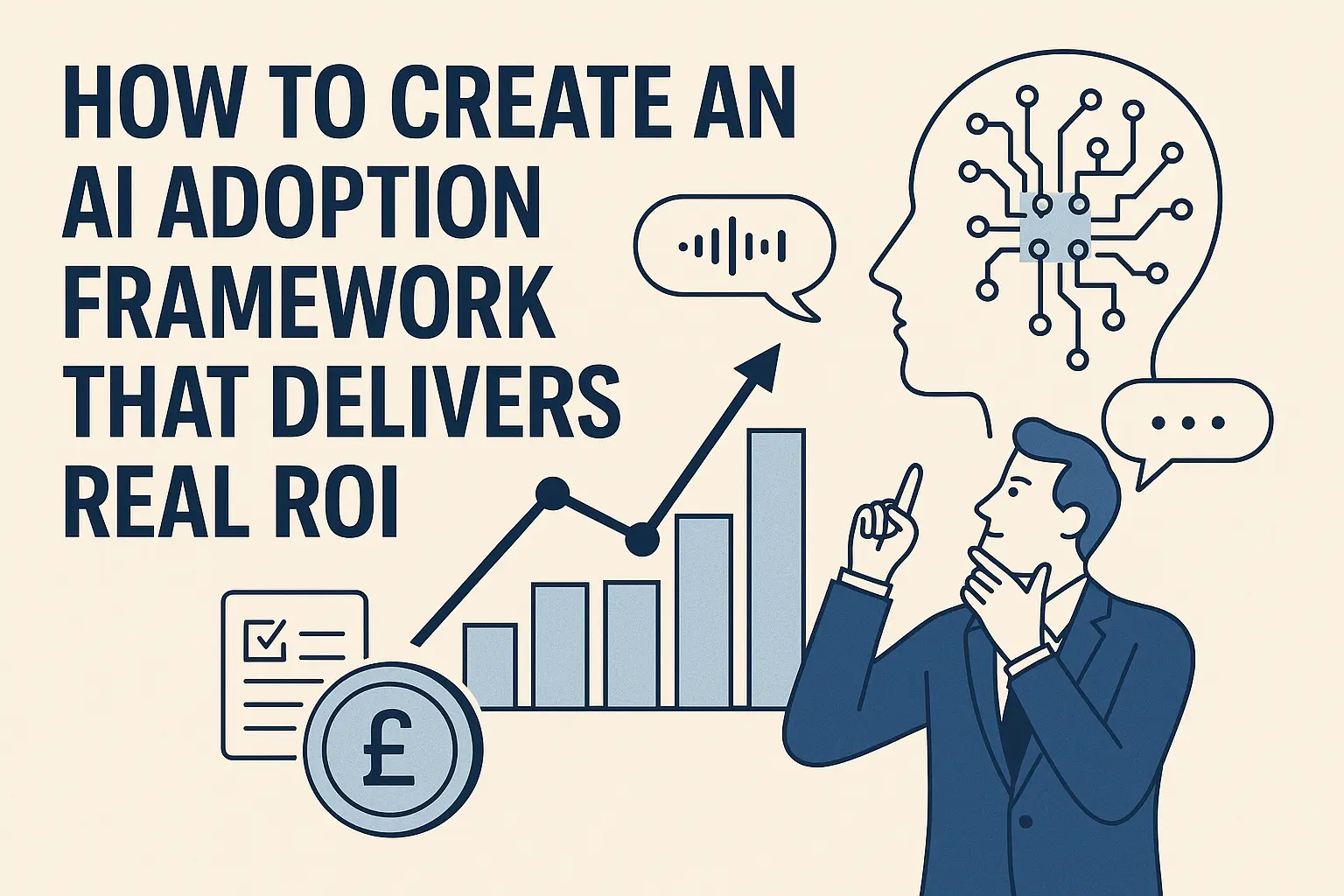TL;DR: The Bottom Line Up Front
AI compliance in 2025 isn’t optional, it’s survival. Companies face new rules from the EU, UK, and US regulators. Winners focus on audits, bias checks, and staff training, while “we didn’t know” excuses won’t fly.
I was chatting with a partner at a mid-sized law firm last week when his face suddenly went pale. "We just got a compliance audit request," he said, staring at his laptop. "They want to see our AI governance documentation." Long pause. "What AI governance documentation?"
And that, friends, is how you discover that AI compliance isn't something you figure out after you've already deployed half a dozen AI tools across your practice.
Welcome to 2025, where "move fast and break things" has been replaced by "move carefully and document everything." Because apparently, regulatory bodies have opinions about letting AI loose in professional services. Who knew?
Why AI Compliance Matters in 2025
The thing about AI compliance in 2025 is that it's not just one thing. Rather, it's a delightful cocktail of overlapping regulations, industry guidelines, and "strongly recommended" practices that somehow became mandatory when no one was looking.
The compliance reality check:
- The EU AI Act is now fully enforced (surprise!)
- UK AI governance frameworks are tightening
- Financial services have specific AI oversight requirements
- Legal professional bodies are issuing AI ethics guidelines
- Data protection laws now explicitly cover AI processing
And here's the kicker: "We didn't know" stopped being a valid excuse sometime around January 2025. Regulatory bodies have developed an unfortunate habit of expecting professionals to, well, act professionally.
AI Compliance in Legal Services: Rules and Risks
Legal AI compliance in 2025 is like playing chess while blindfolded, riding a unicycle, and explaining to your mother why you became a lawyer instead of a doctor. It's complicated, potentially embarrassing, and someone's always watching.
The Legal Profession's AI Wake-Up Call
The Law Society's latest guidance makes it clear: if you're using AI, you're responsible for its outputs. All of them. Even the weird ones make you question whether the AI was having an off day.
Key compliance requirements for legal AI:
Client Confidentiality: Your AI can't accidentally leak client information. (Revolutionary concept, I know.)
- Use secure, compliant AI platforms
- Implement data segregation
- Regular security audits (because "trust me, it's fine" isn't a compliance strategy)
Professional Competence: You must understand what your AI tools do. "It's magic" is not acceptable professional competence.
- Staff training on AI limitations
- Clear protocols for AI-assisted work
- Human oversight requirements (humans still matter, apparently)
Transparency: Clients have a right to know when AI is involved in their legal work.
- Disclosure requirements
- Clear AI usage policies
- Documentation of AI decision-making processes
Real example: A London firm using AI for contract review now includes a standard clause in their engagement letters: "We may use AI tools to assist in legal research and document analysis, subject to lawyer supervision and review." Boring? Yes. Compliant? Also yes.
The "Oops" Moments to Avoid
- The Hallucination Horror Story: AI cites non-existent cases in a court filing. (True story. The judge was not amused.)
- The Confidentiality Catastrophe: AI trained on client data accidentally references one client's sensitive information in another client's matter.
- The Bias Blunder: AI consistently flags certain types of contracts as "high risk" based on biased training data.
All preventable. All career-limiting if they happen to you.
AI Compliance in Accounting and Financial Services
If legal AI compliance is chess on a unicycle, financial services AI compliance is chess on a unicycle while juggling flaming torches and reciting pi to 50 decimal places. In other words: more fun, higher stakes, more ways to mess up spectacularly.
Financial Services: Where AI Meets Regulation (And They Don't Always Get Along)
The Financial Conduct Authority (FCA) has been refreshingly clear about AI compliance: "Figure it out, but do it properly, and document everything." (I'm paraphrasing, but that's the gist.)
Core compliance requirements:
Algorithmic Accountability: You must be able to explain why your AI made specific decisions.
- Decision audit trails
- Explainable AI implementations
- Regular algorithm performance reviews
Fair Treatment: AI can't discriminate, even accidentally.
- Bias testing and monitoring
- Regular fairness audits
- Diverse training data requirements
Risk Management: AI risks must be identified, measured, and managed.
- AI risk assessments
- Scenario testing
- Regular model validation
Data Governance: AI processing must comply with data protection laws.
- Data minimization principles
- Consent management
- Cross-border data handling protocols
Accounting AI Compliance: Because Numbers Don't Lie (But AI Might Get Confused)
The audit trail requirement: Every AI decision in financial reporting must be traceable, explainable, and defensible. Because "the AI said so" doesn't hold up in court, regulatory hearings, or awkward conversations with clients.
Best practice example: One accounting firm implements AI for expense categorization but requires human review for any transaction over £500 or flagged as "unusual." They document the AI's reasoning, the human reviewer's assessment, and any overrides. Tedious? Absolutely. Compliant? You bet.
The Global AI Compliance Landscape
Welcome to the international AI compliance maze, where every jurisdiction has its own rules, and they're all convinced theirs make perfect sense. (Narrator: They do not.)
The EU AI Act: Europe's Gift to Compliance Officers Everywhere
The EU AI Act categorizes AI systems by risk level, from "minimal risk" (your spam filter) to "unacceptable risk" (AI systems that manipulate human behavior). Professional services mostly deal with "high-risk" AI systems, which means:
- Conformity assessments required
- CE marking for AI systems
- Quality management systems
- Risk management processes
- Data governance requirements
- Transparency obligations
Translation: Lots of paperwork, regular audits, and the exciting opportunity to explain AI algorithms to regulatory officials who may or may not understand the difference between AI and Excel macros.
UK AI Governance: The "Principles-Based" Approach
The UK's approach is refreshingly British: "Here are some principles. Figure out how to apply them. Don't mess up." The principles include:
- Appropriate transparency and explainability
- Fairness, non-discrimination, and protection of rights
- Accountability and governance
- Contestability and redress
- Accuracy, reliability and robustness
Practical translation: Be reasonable, be fair, keep records, and don't blame the AI when things go wrong.
Best Practices for AI Compliance in Professional Services
After wading through regulations, here's what actually works in the real world (where budgets are limited and patience for compliance theater is even more limited):
The "Don't Panic" Framework
1. AI Inventory and Risk Assessment
- List every AI tool you use (yes, even ChatGPT for writing emails)
- Assess risk level for each
- Document who uses what, when, and why
- Regular reviews and updates
2. Governance Structure
- Designate an AI compliance officer (someone has to be responsible)
- Clear AI usage policies
- Regular training for all staff
- Escalation procedures for AI-related issues
3. Technical Safeguards
- Data encryption and access controls
- AI system monitoring and logging
- Regular security assessments
- Backup and recovery procedures
4. Documentation Everything
- AI decision-making processes
- Training data sources and validation
- System changes and updates
- Compliance monitoring records
5. Client Communication
- Clear AI usage disclosures
- Consent mechanisms were required
- Complaint handling procedures
- Regular client communications
Real-World Implementation Tips
Start small: Pick one AI tool, get it compliant, then expand. Don't try to boil the compliance ocean on day one.
Document as you go: Retrofitting compliance documentation is like trying to remember what you had for lunch three weeks ago—possible, but painful and probably inaccurate.
Train your people: The best compliance framework is worthless if your staff doesn't understand it or use it.
Regular reviews: AI compliance isn't a "set it and forget it" activity. Technology changes, regulations evolve, and that perfect compliance framework from six months ago might now have more holes than Swiss cheese.
The Future of AI Compliance (2026 and Beyond)

Crystal ball time: What's coming next in AI compliance? (Spoiler: more complexity, more requirements, and more opportunities to discover you've been doing something wrong.)
2026 Predictions
More Sector-Specific Rules: Every professional body will have its own AI guidelines, creating a delightful compliance jigsaw puzzle.
AI Liability Frameworks: Clear legal frameworks for AI-related errors and damages. (Translation: when AI messes up, someone's definitely paying for it.)
Automated Compliance Monitoring: AI systems to monitor AI compliance. (The irony is not lost on me.)
International Harmonization: Attempts to align AI regulations globally. (Optimistic? Yes. Likely? We'll see.)
Preparing for Tomorrow
Build flexible frameworks: Today's compliance solution needs to adapt to tomorrow's requirements.
Invest in people: Technology changes, but good judgment and professional competence remain valuable.
Stay informed: Join professional bodies, attend conferences, read updates. Ignorance stopped being an excuse in 2024.
Ready to get your AI compliance house in order? Don't wait for the regulatory knock on your door. Book an AI Strategy in a Day session and we'll help you build a compliance framework that protects your practice while enabling AI innovation—before compliance becomes your biggest business risk.

.svg)








.svg)